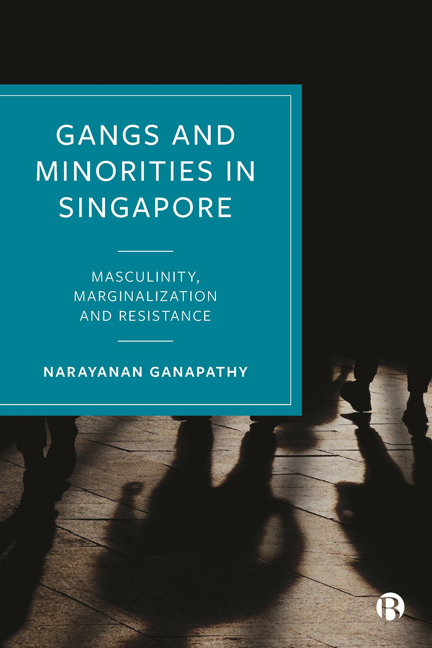Book contents
- Frontmatter
- Contents
- List of Figures
- List of Abbreviations
- Glossary of Non-English Terms
- About the Author
- Preface
- 1 Introduction: Framing the Study
- 2 Omega as Organized Crime?
- 3 Racial Minorities and Crime
- 4 Methods of Study
- 5 The Rise of Omega
- 6 Fearless and Fearsome
- 7 The Omega Wave: The ‘Triadization’ of Omega
- 8 Conclusion: Law, Drug Crimes and Marginality
- Notes
- References
- Index
3 - Racial Minorities and Crime
Published online by Cambridge University Press: 28 March 2024
- Frontmatter
- Contents
- List of Figures
- List of Abbreviations
- Glossary of Non-English Terms
- About the Author
- Preface
- 1 Introduction: Framing the Study
- 2 Omega as Organized Crime?
- 3 Racial Minorities and Crime
- 4 Methods of Study
- 5 The Rise of Omega
- 6 Fearless and Fearsome
- 7 The Omega Wave: The ‘Triadization’ of Omega
- 8 Conclusion: Law, Drug Crimes and Marginality
- Notes
- References
- Index
Summary
In countries such as the United States, Britain, Canada, France, Australia, New Zealand and the Netherlands, the high proportion of Indigenous peoples and ethnic and racial minorities incarcerated or in the criminal justice system has raised questions and much debate about the link between criminal justice, race and class (Mauer and King, 2007). The figures from two of these countries, by way of illustration, are stark. For example, according to the Federal Bureau of Investigation’s (FBI) 2019 Uniform Crime Report, 26.6 per cent of all arrests and 36.4 per cent of arrests for violent crime in the United States were Black or African American, despite comprising only 14 per cent of the population (FBI, 2019; Tamir et al, 2021). ‘Of adults arrested for murder, 51.3 per cent were Black or African American [and] 45.7 per cent were White’ (FBI, 2019). In terms of juvenile violent crime, African Americans comprised nearly 49 per cent of all juveniles arrested in 2020 (Office of Juvenile Justice and Delinquency Prevention, 2020). Piquero and Brame (2008: 1–2) reveal that ‘the non-White arrest rate for robbery was 132.8 per 100,000, whereas the comparable rate for Whites was 23.0 per 100,000’ and also that ‘the non-White to White robbery ratio was 5.773, indicating that for every one White who was arrested for robbery, almost six non-Whites were arrested’ for the same crime. In fact, Piquero and Brame conclude that the arrest rates for non-Whites were higher than White arrest rates for all crimes. Of note, however, is the disparity between the rates of drug arrests and the rates of drug offending among minorities. Mitchell and Caudy (2015, cited in Drakulich and Rodriguez-Whitney, 2018: 19) find that ‘at ages 17, 22, and 27 African-Americans’ chances of drug arrest are approximately 13, 83, and 235% greater than whites, respectively’, despite the fact that ‘African-American and Hispanics reported statistically lower rates of drug offending [compared to Whites] on nearly every measure of drug offending’. Drakulich and Rodriguez-Whitney (2018) further note that African-American youth are twice as likely to report having had some contact with the police, highlighting the racialized imbalances between contact with the justice authorities and actual offending, and also the relatively early start to experiencing these racialized encounters.
- Type
- Chapter
- Information
- Gangs and Minorities in SingaporeMasculinity, Marginalization and Resistance, pp. 29 - 59Publisher: Bristol University PressPrint publication year: 2023



